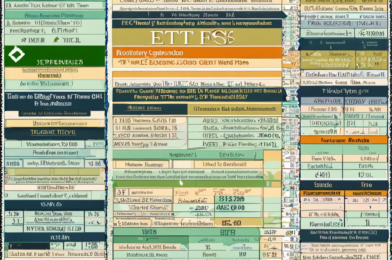Exchange-traded funds (ETFs) have become increasingly popular among investors seeking diversification and flexibility in their portfolios. One effective strategy that investors can utilize with ETFs is sector rotation. Sector rotation involves shifting investments between different sectors of the economy based on their performance cycles. By strategically allocating assets to sectors that are expected to outperform in the current market environment, investors can potentially enhance their returns and manage risk more effectively.
One key advantage of using ETFs for sector rotation strategies is the ease of diversification they offer. ETFs are designed to track specific sectors or industries, allowing investors to gain exposure to a wide range of companies within a particular sector with a single investment. This diversification helps spread risk across various assets, reducing the impact of volatility in any single stock or sector on the overall portfolio.
Another benefit of utilizing ETFs for sector rotation is the flexibility they provide. Unlike individual stocks, ETFs can be bought and sold throughout the trading day at market prices, offering investors the ability to quickly adjust their sector allocations in response to changing market conditions or economic outlooks. This agility is particularly valuable in dynamic market environments where sector performance can shift rapidly.
When implementing a sector rotation strategy using ETFs, it is essential for investors to conduct thorough research and analysis. Understanding the underlying fundamentals of each sector, as well as macroeconomic factors influencing their performance, is crucial for making informed investment decisions. By staying informed about market trends and sector-specific news, investors can identify opportunities for sector rotation and position their portfolios accordingly.
In conclusion, ETFs can be valuable tools for investors looking to implement sector rotation strategies in their portfolios. With their diversification benefits, flexibility, and ease of trading, ETFs offer a convenient way to access different sectors of the economy and capitalize on changing market dynamics. By conducting diligent research and staying attuned to market developments, investors can effectively leverage ETFs for sector rotation and potentially enhance their investment outcomes.









